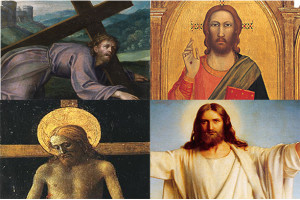Have you ever wondered: why are there four Gospels?
Why not three, or five? How should we read the four Gospels separately—and together?
This course will transform how you read the Gospels. Whether you’ve been reading the Gospels your whole life, or you’ve only just begun, you’ll gain new insight into the story of Jesus—and the four specific ways the Gospel writers tell this story.
Your instructor is Mark Strauss, Professor of New Testament at Bethel Seminary. For years, Dr. Strauss has been teaching courses on Jesus’ life and ministry, and his books have been used by thousands of students in hundreds of seminaries and colleges.
When you complete this course, you will be able to:
-
Identify and define the main rhetorical devices of Mark’s Gospel
-
Summarize the plot of Mark’s Gospel—especially with reference to the key turning point in chapter 8
-
Describe the main features of Mark’s portrait of Jesus
-
Identify the role played by demos, religious leaders, disciples, and other characters in Mark’s Gospel
-
Summarize Mark’s main theological themes, including the kingdom of God, discipleship, and the identity of Jesus
-
Explain what we know about John Mark, the likely author of the Gospel
-
Provide basic evidence for the historical setting of Mark’s Gospel
-
Identify the main literary features of Matthew’s Gospel
-
Summarize the themes of the five major discourses in Matthew
-
Describe the main features of Matthew’s Christology, especially the titles Christ, Son of David, Son of God, and Immanuel
-
Compare how Matthew and Mark portray the religious leaders
-
Summarize Matthew’s main theological themes
-
Identify the likely audience of Matthew’s Gospel and Matthew’s purpose in writing it
-
Provide the basic evidence for the date and authorship of Matthew’s Gospel
-
Identify the main literary features of Luke’s Gospel, especially with reference to the unity of Luke-Acts, the fine literary style, and Luke’s historiographic interest
-
Summarize the main themes and structural features of Luke’s birth narrative
-
Explain the narrative and theological significance of the Nazareth sermon (Luke 4)
-
Identify the narrative and theological function of Luke’s “travel narrative,” including the main theme of the stories and parables
-
Describe the main features of Luke’s portrait of Jesus, especially with reference to the titles prophet and Christ
-
Identify the central theme of Luke’s Gospel
-
Explain what we know about the author Luke and the likely identity of Theophilus, the recipient of Luke-Acts
-
Identify the main literary features of John’s Gospel, especially its differences from Matthew, Mark, and Luke
-
Describe the main features of John’s portrait of Jesus
-
Identify the central theme and narrative purpose of John’s Gospel
-
Identify the structure of John, including the significance of the book of “signs” and the book of “glory”
-
Identify and explain the significance of the “I am” statements made by Jesus in John
-
Summarize the main theme of John’s prologue
-
Explain the narrative and theological significance of Jesus’ interviews with Nicodemus and the Samaritan woman
-
Summarize the nature of Jesus’ dialogues and debates with the religious leaders
-
Describe the narrative and theological significance of the raising of Lazarus
-
Summarize the main themes of Jesus’ Farewell Discourse, including the role of the Spirit after Jesus’ departure
-
Explain the nature of John’s theological dualism and the distinct Johannine teaching about salvation
-
Provide evidence for the authorship of the Fourth Gospel









